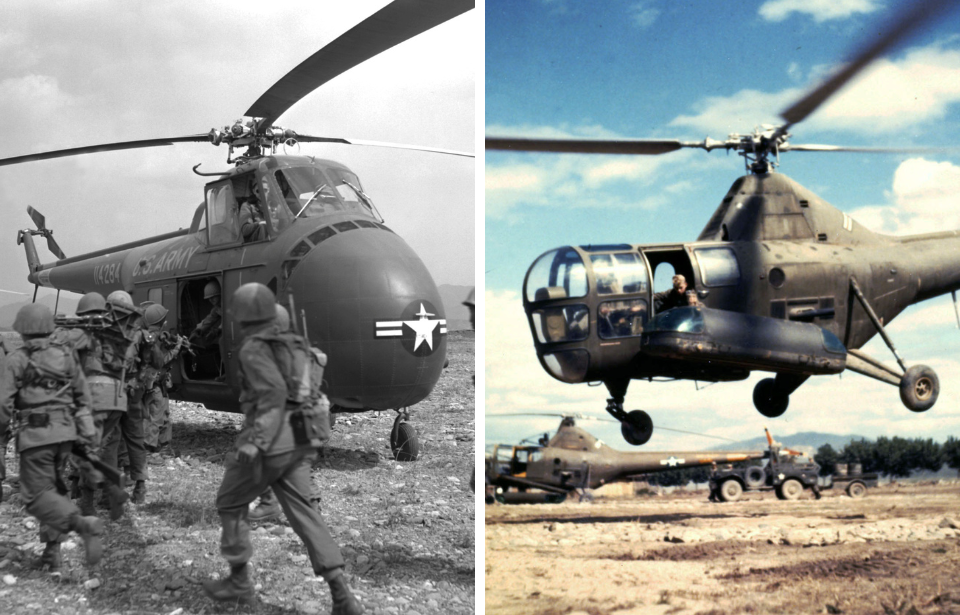The Korean War took place between 1950-53 and saw the UN coalition forces operate a plethora of military vehicles, including helicopters. The United States, in particular, employed several different types for a variety of needs. The following is a list of six choppers of different sizes, speeds, shapes and purposes. Each was influential to – or influenced by – the war effort and proved they had the chops to serve in the skies.
Bell H-13 Sioux
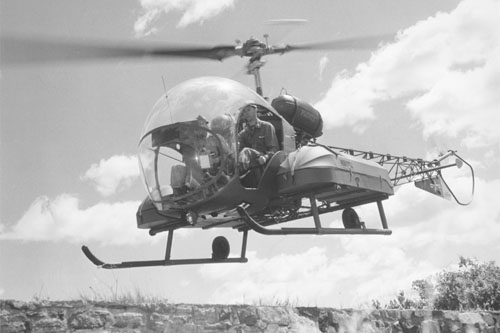
The Bell H-13 Sioux is arguably the most famous Korean War-era helicopter, becoming the first to be deployed in the conflict. It’s easily recognized by its “soap bubble” canopy and exposed tube tail. It was a single-engine light helicopter that was largely used as a MEDEVAC and reconnaissance craft, while also seeing use in liaison and training purposes.
The H-13 could house three crewmen in its cockpit, and reached a maximum speed of 105 MPH, with a range of 273 miles. Despite being a light helicopter, it could still carry up to 2,500 pounds, which was crucial in MEDEVAC situations. The H-13 became an icon of Korea, not just because of its service, but for its appearance on the famous television show M*A*S*H* (1972-83).
Hiller OH-23 Raven
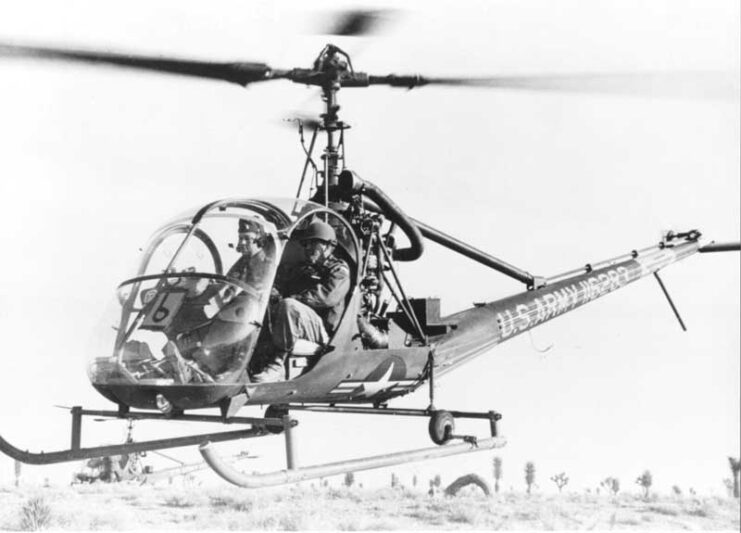
The Hiller OH-23 Raven was deployed at around the same time as the Bell H-13 Sioux, making it, too, one of the most famous helicopters of the Korean War. Initial designs for the chopper had the cockpit sloping forward, but this was ultimately replaced, giving the OH-23 its recognizable “goldfish bowl” canopy.
OH-23s were used more for observation and scouting missions, but also performed MEDEVAC and training roles. The helicopter was almost as fast as the H-13, reaching a maximum speed of 95 MPH, and had a range of 197 miles. The chopper could be equipped with either twin M37C .30-caliber or M60C 7.62 mm machine guns, when necessary.
The most notable use of an OH-23 was actually during the Vietnam War, with pilot Hugh Thompson Jr.‘s curtailing of the Mỹ Lai Massacre, for which he was branded a traitor by many in the US government and public.
Piasecki HUP Retriever / H-25 Army Mule
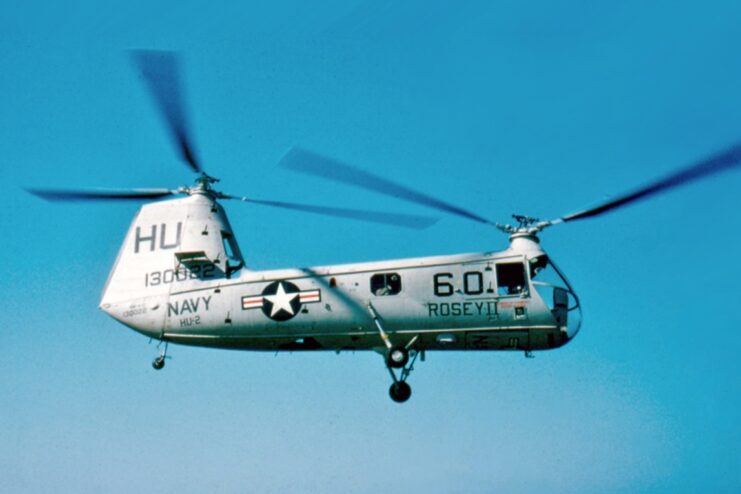
The Piasecki HUP Retriever / H-25 Army Mule looked nothing like the first two helicopters mentioned on this list. It was designed for the US Navy in 1945 as a carrier-based search and rescue craft. However, the Army purchased it in 1951 and converted the helicopter into a cargo carrier and air ambulance for service in the Korean War, giving it the H-25 designation.
The HUP/H-25 was a compact, single radial engine, twin overlapping tandem rotor chopper. It had two three-bladed rotors, and was equipped with a winch that could hoist up to 400 pounds. It became the first helicopter to be built with an autopilot system, and was the first to perform a loop. The helicopter had a maximum speed of 105 MPH and a range of 340 miles.
Sikorsky H-5 Dragonfly
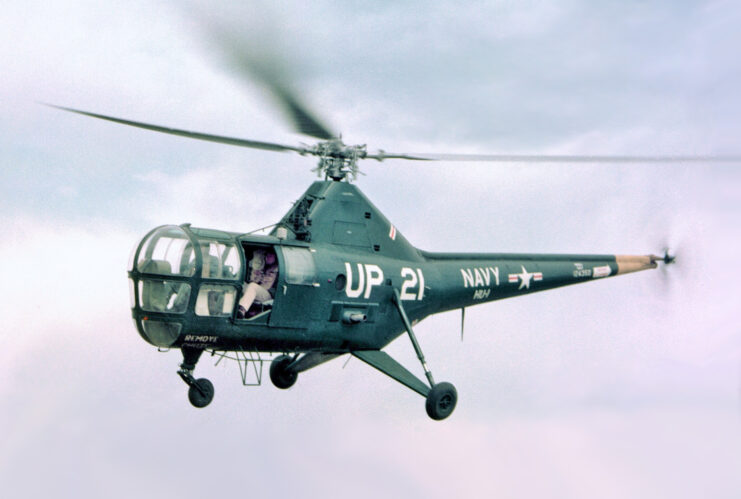
The Sikorsky H-5 Dragonfly was one of the most active helicopters of the Korean War. It was primarily used in rescue missions to save downed UN pilots, as well as evacuate wounded soldiers from the frontlines. It had a recognizable two-pilot tandem cockpit, and operated using a three-bladed main rotor and a two-bladed tail unit.
The H-5 had a maximum speed of 106 MPH, with a range of 360 miles. It could carry two medical litters on external panniers, giving it the ability to lift an additional 1,000 pounds.
Sikorsky H-19 Chickasaw
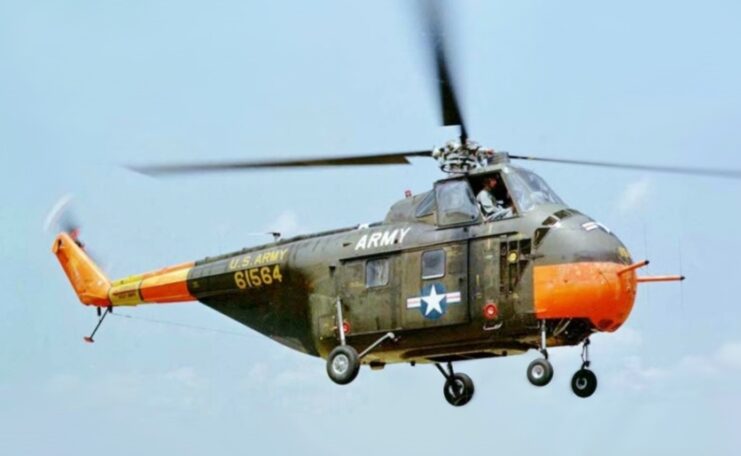
The Sikorsky H-19 Chickasaw helicopter eventually replaced the H-5 during the Korean War, and is considered the US Army’s first proper transport helicopter. Much like its predecessor, the H-19 was used in evacuating downed pilots from behind enemy lines, but also served as a supply carry craft. Its design relocated the engine to the front, allowing for a better balance of weight when carrying different weight loads.
The H-19 was a large, dual-rotor helicopter that could carry a crew of two. It could also hold an additional 10 personnel when operating as a transport carrier or up to six litter patients and a nurse, if serving as an air ambulance. The H-19 could reach a maximum speed of 101 MPH, and had a range of 450 miles.
Piasecki H-21 Shawnee / Workhorse
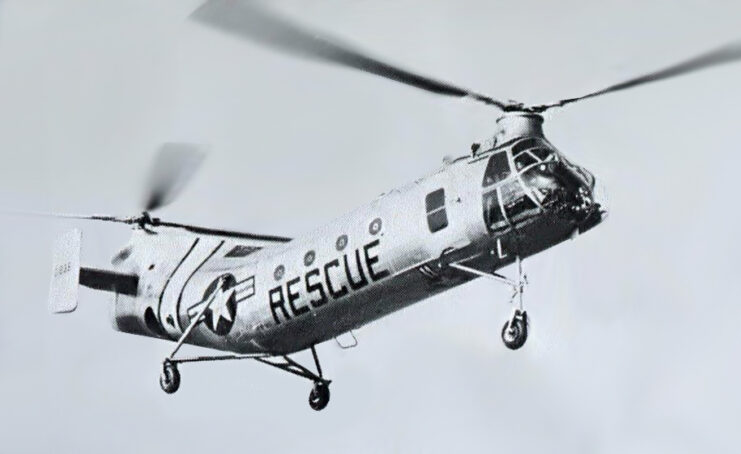
The Piasecki H-21 Shawnee/Workhorse helicopter was more of a product of the Korean War, rather than having served during it. The chopper was developed and completed during the conflict, and took its first test flight in 1952. It was nicknamed the “Flying Banana,” due to its unusual shape, which was a measure taken to ensure the rotors could never make impact with the fuselage.
More from us: Pave Low: Converting Search and Rescue Helicopters for Use In Special Ops
It was a tandem-rotor helicopter that could be used for multi-mission purposes, thanks to its equipment, which included wheels, skis and floats. The H-21 could hit speeds of 127 MPH and could carry over 6,000 pounds. It was so large that it could hold either 22 fully-equipped infantrymen or 12 stretchers, while still having space for two medical attendants.
